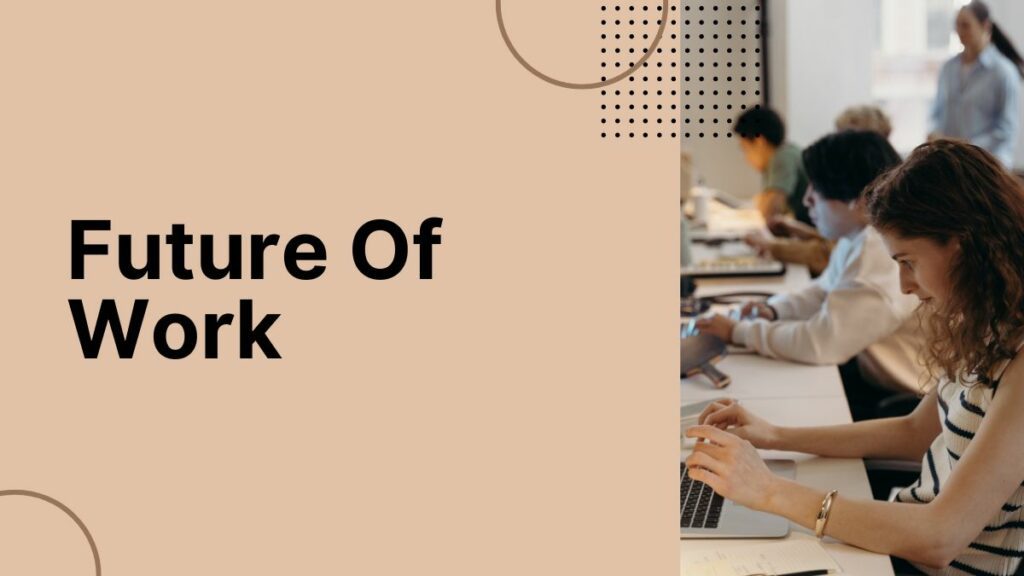The future of work is here and reshaping everything we know about professionalism. From the risk of a hybrid work environment to AI-driven tasks, these changes come with unparalleled opportunities. But they also have their pitfalls. Organisations must alter their work structure to thrive in this dynamic new environment.
This fundamental shift in the workplace changes how we understand and engage in professional environments. Driven by global trends, technological advancements, and societal changes, this transformation will redefine the nature of work. These changes will affect everything from company structure, job roles, workforce demographics, and skills requirements. Preparing for this workplace shift can help businesses thrive in this new era.
Do you want to enhance your leadership skills? Then, check out the Executive Certificate Programme for Strategic Chief Executive Officers by Imarticus in collaboration with IIM Raipur. This CEO course will teach you to think strategically and effectively manage change.
This blog discusses strategies to restructure the organisational design to stay ahead of competitors.
What are the factors affecting the future of work?
There are a few key factors affecting the future of work. Understanding these factors will help companies navigate around them. Here is a list of these areas affection the workplace in the future:
-
Remote work
The shift towards remote work has significantly accelerated in the past few years. This trend is expected to continue as employers and employees recognise the benefits of flexible working arrangements.
The option to work remotely has promoted work-life balance, reduced commuting time, and allowed companies to attract talent from a larger geographic pool. However, organisations need reliable communication tools, secure data management systems, and efficient collaboration platforms to execute remote working conditions effectively.
-
Integration of technology
Introducing new advanced technologies and automation has already revolutionised job roles across industries. Tools like AI (Artificial Intelligence) and ML (Machine Learning) allow companies to perform tasks that were once considered complex with exceptional speed and accuracy.
This significantly boosts the business's productivity. However, it also calls for a workforce transformation. Technology will continue to evolve; workers ought to adapt and upskill to keep up with the rapid pace.
-
Skills shift
There is a demand for new skills in this evolving job market. With AI and automation taking over routine tasks, there is an increased demand for technical and soft skills.
Critical thinking, creativity, and problem-solving skills will help you navigate the complexities of modern work environments. This helps drive innovation within the company. Firms today are prioritising skill development and continuous learning to stay competitive.
However, the lifespan of a skill continues to become shorter because of the rapid pace of technological change. This necessitates lifelong learning and upskilling.
Want to learn more about factors affecting the future of work? Check out the CEO course by Imarticus.
Trends that can be seen in future workplaces
Organisations today are far different from what they used to be. Companies' strategies are based on their employees' preferences, which helps boost productivity and cultural effectiveness.
Here is a list of future trends that we will observe in workplaces:
- Greater engagement: Organisations will engage employees by providing a medium for communication and integration. This will help recognise team or individual contributions and facilitate effective collaboration.
- Attracting top talent: Organisational design will be altered as companies attract talent worldwide. Creating a comfortable and flexible workspace will allow businesses to recruit and retain talented individuals.
- Flexible work: Future workspaces should have the right technology to allow employees to work effectively from anywhere. Flexible working conditions help keep employees motivated, which positively impacts overall performance.
- New technology: Smart desks and boards are entering large organisations. The future of work includes advanced technical devices and virtual team rooms to make the workspace a positive and productive environment.
What is people strategy?
A company’s people strategy is its approach toward recruiting, training, engaging, and retaining its workforce. The goal of the strategy is to ensure that the employees are aligned with the organisational objectives. After all, no business is successful without its people.
These are a set of human-centric guidelines that are needed to develop talent, improve leadership, and promote inclusivity and diversity.
However, people's strategy is often confused with HR strategy. Essentially, both support the business goals. HR strategies focus on attracting and retaining valuable talent, whereas people strategy focuses on building healthy relationships.
Purpose of building a people strategy
Here are a few ways in which companies will benefit from the implementation of a people strategy:
- Having a well-documented people strategy helps organisations demonstrate commitment toward their employees.
- It provides a favourable working environment for employees to thrive.
- Motivates the employees to be agile and innovative in finding new solutions to unexpected circumstances.
Summing up
The future of work is far different from traditional work cultures. A well-developed strategy will help address the uncertainty and implications of future events. Organisations need to upgrade their workspaces to accommodate the new challenges and build a strong, reliable team.
Learn to adapt to the ever-changing business landscape, and enrol with Imarticus today!
Frequently Asked Questions
What does a future of work strategy include?
It includes a description of the organisation’s current and desired working conditions. The strategy also includes a priority list of future work trends and a roadmap to implement the initiatives that the company plans to achieve.
Where are future trends found?
You can source trends from external sources such as press reports, search engine alerts, outside experts, etc. You can also refer to internal sources like talent analytics, executive meetings, employee and customer surveys, etc.
Why is workforce transformation necessary for the future?
With the introduction of automation, repetitive tasks have been eliminated. Now, companies will look for employees whose work cannot be done by a bot. Organisations are bound to restructure to build a force that can sustain itself in the future.
What will happen if a company doesn’t have a people strategy?
Having a well-defined people strategy can prevent organisations from creating misaligned teams. Emphasise the wrong priorities, which will eventually cause double work. It also leads to unclear customer roadmaps and products.









